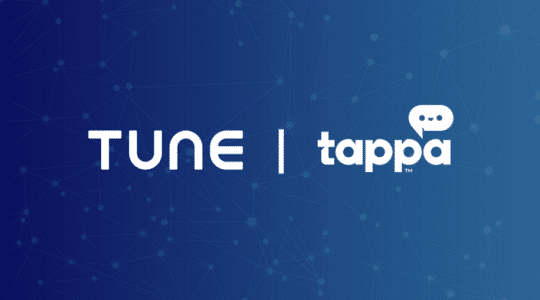Brand marketing, as we know it, will disappear. In its place will be a measurable form, one that focuses on performance-based actions. That was the argument Gabe Leydon, CEO of the game development company Machine Zero, put forth during an interview with Re/code’s senior editor, Peter Kafka. The talk was held at Code/Media 2016, an annual two-day conference for media and tech experts.
Since 2012, more distribution channels like Facebook and YouTube (in 2014) have started offering app install ads. Mobile media converged on app installs, leading to an expansion of the market. Machine Zone capitalized on this change by using multiple platforms rather than just one. As Leydon puts it, mobile gaming is a “frictionless business,” where anyone, upon seeing an advertisement, can use their phone to download a game, start playing, and make an in-app purchase, all within the span of two minutes. With instant distribution and the potential for instant monetization comes the ability to track each install — creating an opportunity for more control.
Here’s our take on Leydon’s interview regarding the power of performance marketing:
Brands are the New Performance Marketers
In the early days of digital advertising, brands had little interest in (or were unaware of) performance marketing. Instead, they let agencies and affiliate networks handle this aspect for them. Without knowing the results of their efforts, buyers had no idea what actions were most valuable.
As Leydon states, some of the largest companies in the world, such as Facebook and Google, are performance marketers—that’s why people give them money. “Google makes $70 billion a year because they embrace it,” says Leydon. He’s embraced it himself as well. Machine Zone succeeded with its marketing strategy through prioritizing both performance and valuation. The company behind major hits like Game of War: Fire Age and Mobile Strike uses a mix of both mobile and TV marketing platforms. Machine Zone distributes its gaming apps on 300 different digital channels, and they air TV ads featuring international celebrities such as Arnold Schwarzenegger and Kate Upton Mariah Carey, all in the pursuit of expanding their audience reach worldwide. Leydon argues that there’s social power that comes from TV advertising, but its real effect is only captured when it’s paired with digital, where you can track performance metrics like clickthroughs and conversions.
The result is that many brands are now turning into performance marketers because they realize that you won’t succeed unless you measure performance, particularly in the mobile economy.
“Media Will Be Quantified”
Leydon makes a strong statement about media companies, who he says have been avoiding performance marketing and being held to accountable data. “It’s scary to quantify your eyeballs,” says Leydon. But this will change — we’ve advanced past the point of simply tracking views — buyers need to see the value of those views by distinguishing real views from fake ones, learning if the audience is performing an action and what the effects are, and determining whether or not more views can be bought.
He claims that buyers are generally unhappy because they’re unable to quantify their media to determine what actions are producing the most desirable results. Current software isn’t sufficient to give them the level of control and transparency they’re looking for. Nobody wants to use 10 different tools to get the job done.
This is where performance marketing management tools like HasOffers and TUNE Marketing Console come in, which give marketers more control over both the supply and demand sides of the business. With the right tools, they can drive multiple app install campaigns, consolidate media statistics and analyze audience behavior on one central dashboard. Through these actions, marketers and buyers can become empowered to draw improved results from their marketing efforts. “Media will be quantified, period,” says Leydon, and this means buyers are going to become more sophisticated. Having the right tools to measure performance, whether on the network or publisher side of the business, is critical for this success.
Buyers Will Spend More if They Know the Risk Level
Sophisticated ad buyers are painful to work with, Leydon states. “I have to be,” he says, citing things like fraud and a lack of transparency about real, concrete numbers. But much of what is commonly called “fraud” in today’s ecosystem is simply the wrong traffic for the wrong offer. When it comes to regulations, brand marketers must be strict on what channels are and are not allowed; that’s the only way they can keep quality high and make sure they get the right value in return. However, if they knew the risk involved, they might choose to open up to other non-premium channels. The reality is marketers are willing to pay more for platforms that offer fewer risks, and pay less when more risk is involved. This means the more media companies prioritize performance marketing and quantifiable results, the better this will serve both both parties.
“Actively avoiding performance marketing will hurt you,” says Leydon. A bold statement to be sure, but he drives home the message that brand marketing is changing. It’s necessary for marketers to measure the value and risk for each action they take in order to learn which ones are worth doing, and which ones are simply wasting time and money. In the long run, a performance marketing–based approach will ensure a company thrives in an increasingly competitive market.
Like this article? Sign up for our blog digest emails.
Author
Josh Todd, TUNE's VP of Product, is an innovative product management leader with 12 years of experience in the partner marketing industry. Prior to TUNE, Josh ran an early mobile-focused affiliate network, wrote a marketing blog, and generated thousands of leads for advertisers via targeted media buys.




Leave a Reply
You must be logged in to post a comment.